21 Wild Animals in Bolivia [Wildlife in Bolivia]
Want to know more about wildlife in Bolivia?
Discover 21 wild animals in Bolivia in this post, as well as interesting facts about them. 🇧🇴
Learn All About Bolivian Animals
Ready to learn all about Bolivian animals?
I’ve always been fascinated by animals, and by how they can be so different from one country to another. In this guide, we’ll focus on the many animals Bolivia has on the land, in the sky, and underwater.
I’ve split the guide into 4 categories:
- Native animals from Bolivia
- Endangered animals of Bolivia
- What is Bolivia national animal?
- How many animals native to Bolivia?
Let’s dive in right away with our first category!
Native Animals from Bolivia
Bolivia is a landlocked South American country located in the central part of the continent. Its society is multiethnic and is made of Europeans, Amerindians, Asians, Africans, and Mestizos, and it is bordered by Peru, Chile, Brazil, Paraguay, and Argentina. Its constitutional capital is Sucre, its largest city and main industrial center is Santa Cruz de la Sierra, and its capital city is La Paz, which counts more than 766,000 inhabitants (but more than 2,187,000 if you include the metropolitan area).
An interesting part of the country that I wanted to tackle is its wildlife. In light of that, I have listed the best of it, and I hope you will love learning what animals live in Bolivia.
Here’s the Bolivia animals list.
1. Jaguar
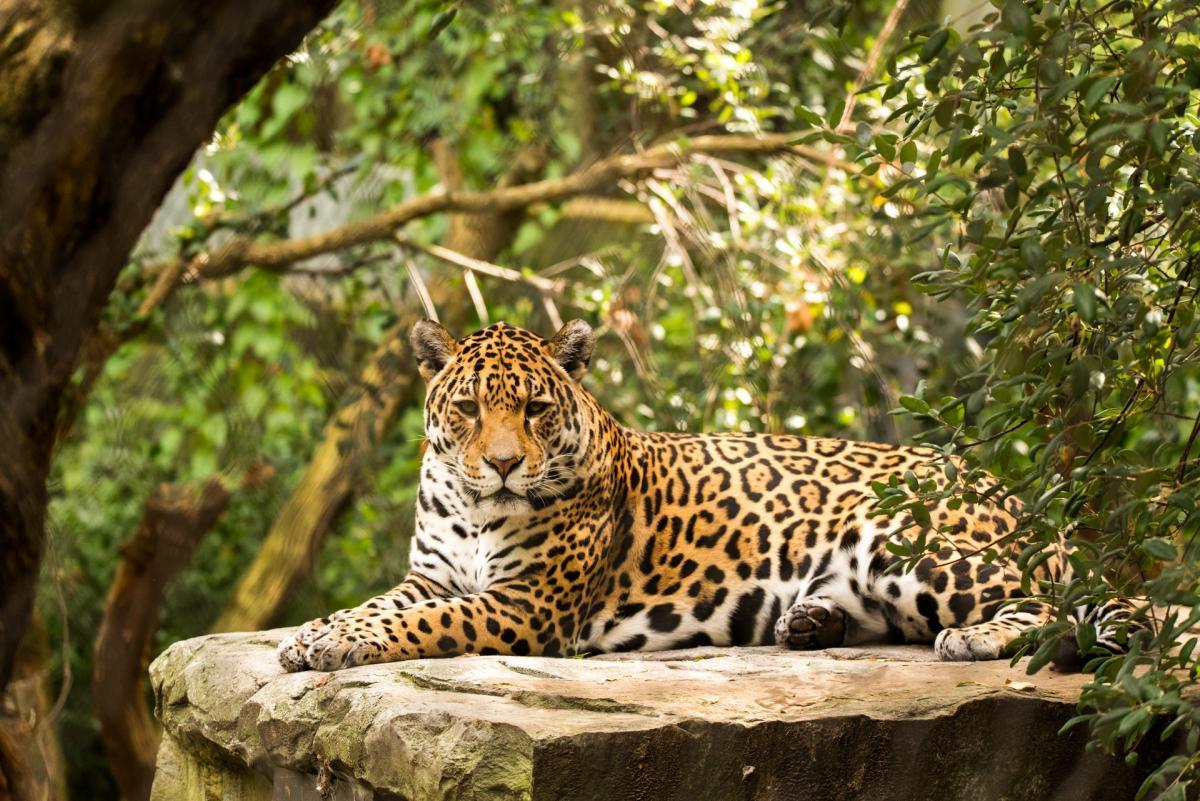
- Name: Jaguar
- Scientific name: Panthera onca
- Conservation status:
The jaguar is one of the most famous and largest species of wild cats. It is native to the Americas, and it is the largest cat species there (and third in the world). It is speculated that the jaguar we currently know came from Eurasia via the Bering Strait, which used to be a land bridge.
Jaguars are great at swimming, and they are opportunistic and solitary apex predators. In fact, it has a critical role in maintaining its ecosystem and regulating prey populations. Because of this, it needs to be protected at any cost but has historically suffered from poaching and habitat loss.
2. Green anaconda
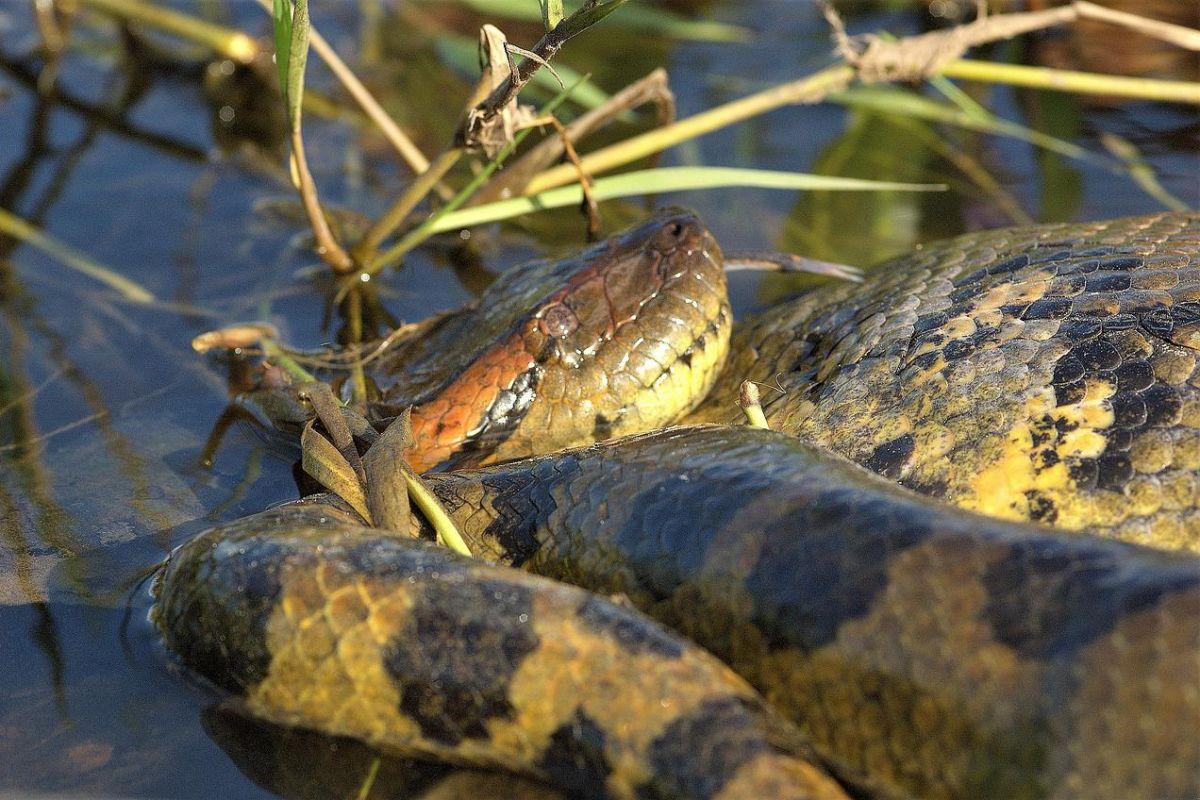
- Name: Green anaconda
- Scientific name: Eunectes murinus
- Conservation status:
The green anaconda, also known as the common water boa or the giant anaconda, is a species of boa native to South America. It is the heaviest and the longest snake on the planet, as it may be longer than 8.8 m / 29 ft!
Similar to other boas, the green anaconda is not venomous but is rather a constrictor. It is an aquatic predator that eats whatever it cans, from fish and amphibians to birds, mammals, and other reptiles.
3. Cuvier’s dwarf caiman
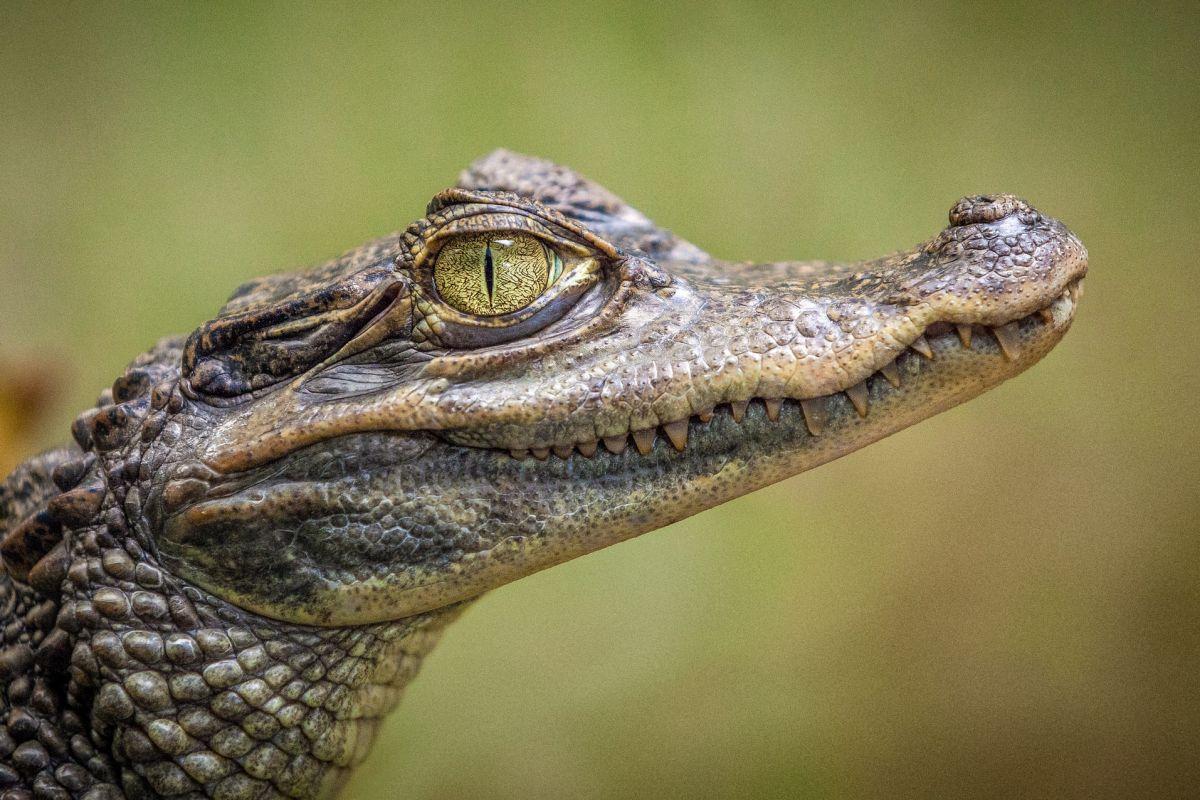
- Name: Cuvier’s dwarf caiman
- Scientific name: Paleosuchus palpebrosus
- Conservation status:
Cuvier’s dwarf caiman is, as its name says, a small species of crocodilian in the alligator family. It can be found throughout most of northern South America, including Bolivia. It is also called musky caiman, wedge-head caiman, and smooth-fronted caiman, though that’s also the name of another species.
Its name comes from Georges Cuvier, a French zoologist who first described it. Though it is unusually small, it has very strong body armor.
4. Short-tailed chinchilla
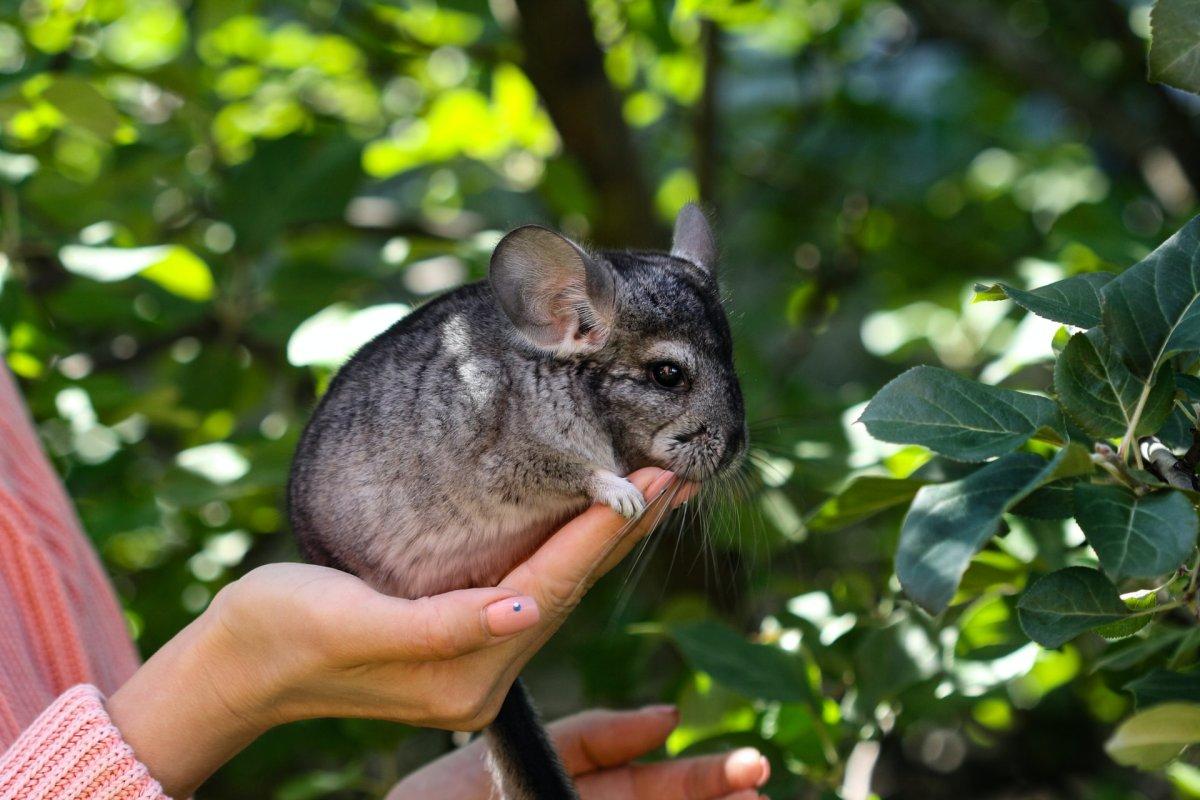
- Name: Short-tailed chinchilla
- Scientific name: Chinchilla chinchilla
- Conservation status:
The short-tailed chinchilla is definitely the cutest animal on this list. Also known as the Bolivian, Peruvian, or royal chinchilla, this little South American rodent is sadly endangered. It was exploited for its luxurious fur, and even though there are now conservation measures, not all of them are respected.
This species of chinchilla is the ancestor of the domestic chinchilla, and it burrows under rocks in the wild. It likes cold weather, which is why it has such dense fur and is herbivorous.
5. South American tapir
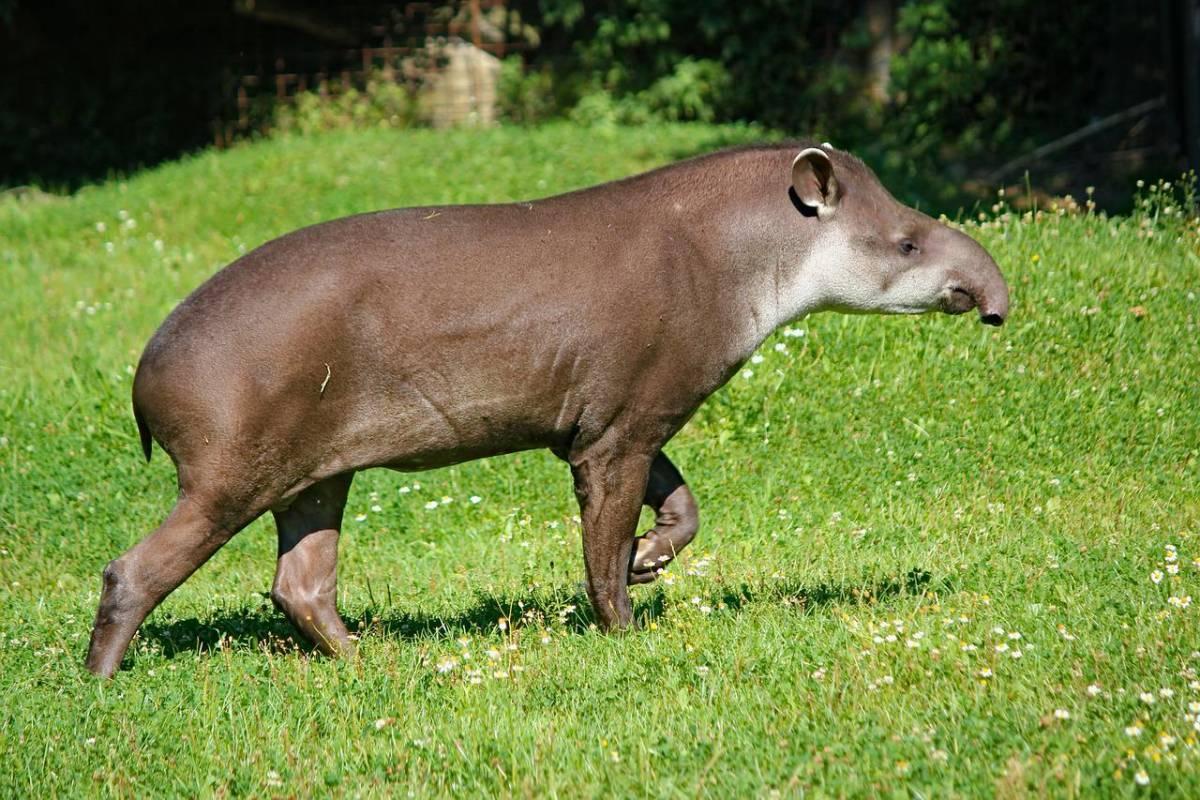
- Name: South American tapir
- Scientific name: Tapirus terrestris
- Conservation status:
Tapirs are truly interesting creatures. They are a species of mammal that looks like a bovine with a short prehensile trunk. In fact, they are also the largest native terrestrial mammal in the Amazon.
The South American tapir is one of the four species of tapir, and it is also known as the Amazonian tapir, the maned tapir, and the lowland tapir. It lives near bodies of water around the Amazon rainforest and also in the Andes mountain range.
6. Brown-throated sloth
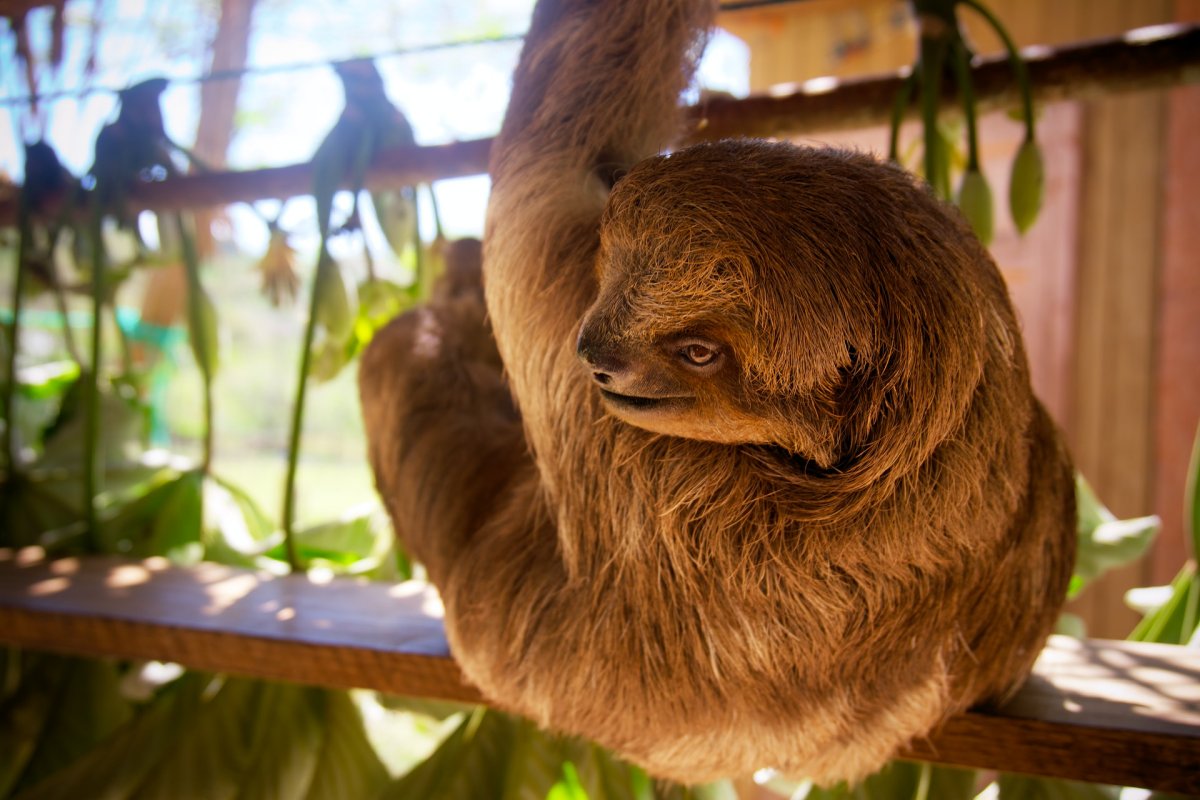
- Name: Brown-throated sloth
- Scientific name: Bradypus variegatus
- Conservation status:
The brown-throated sloth is a species of sloth native to South and Central America. It inhabits forests and is one of the four three-toed species of sloths.
Sloths are named this way due to their movement and the time they are sleeping. This one sleeps for 15 to 18 hours a day and is only active for a brief period of time. Most of the time, it will stay in high branches in the trees and is threatened by jaguars and harpy eagles.
7. Maned wolf
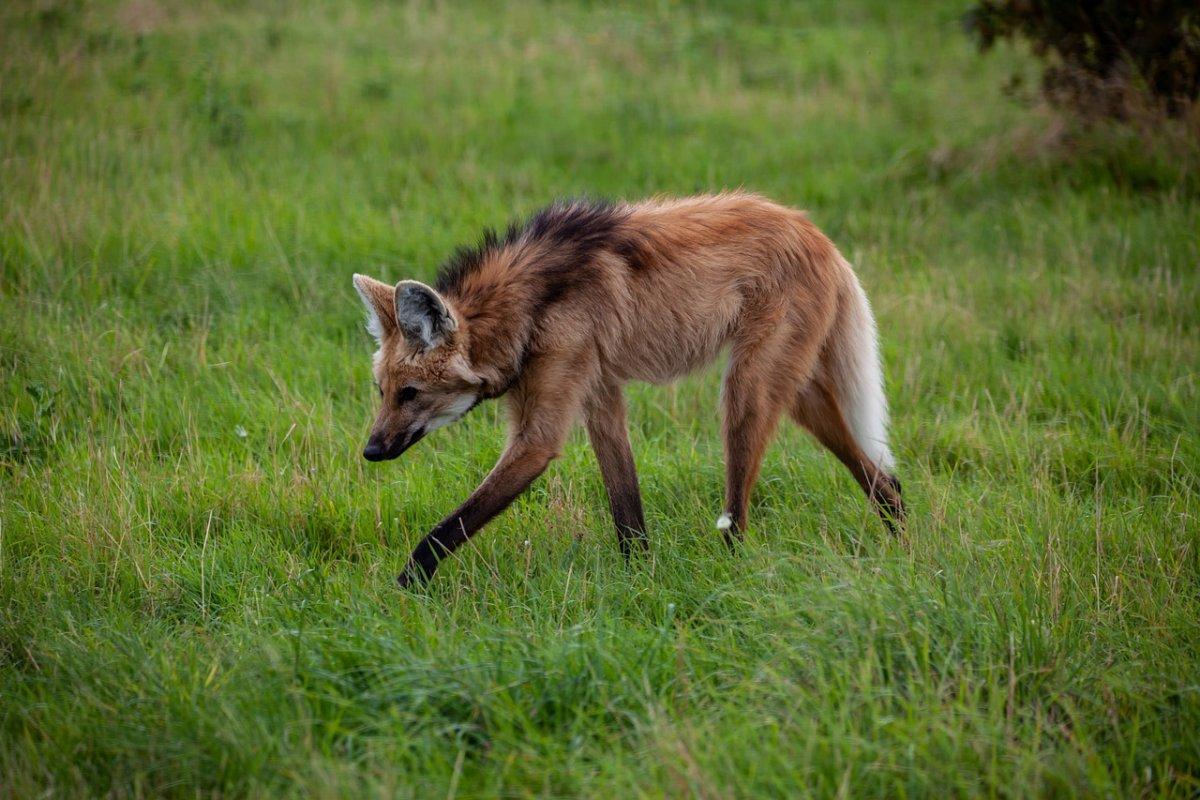
- Name: Maned wolf
- Scientific name: Chrysocyon brachyurus
- Conservation status:
The maned wolf is the largest species of canine from South America. It is an omnivorous and crepuscular animal that usually lives in the savanna and grasslands. Unlike many wolves, it is solitary, and it hunts from sunset to midnight. Its diet is majorly made of small and medium-sized animals, but also a lot of fruit and sugarcane.
Through excretion, the maned wolf plays an important role in seed dispersal.
8. Giant otter
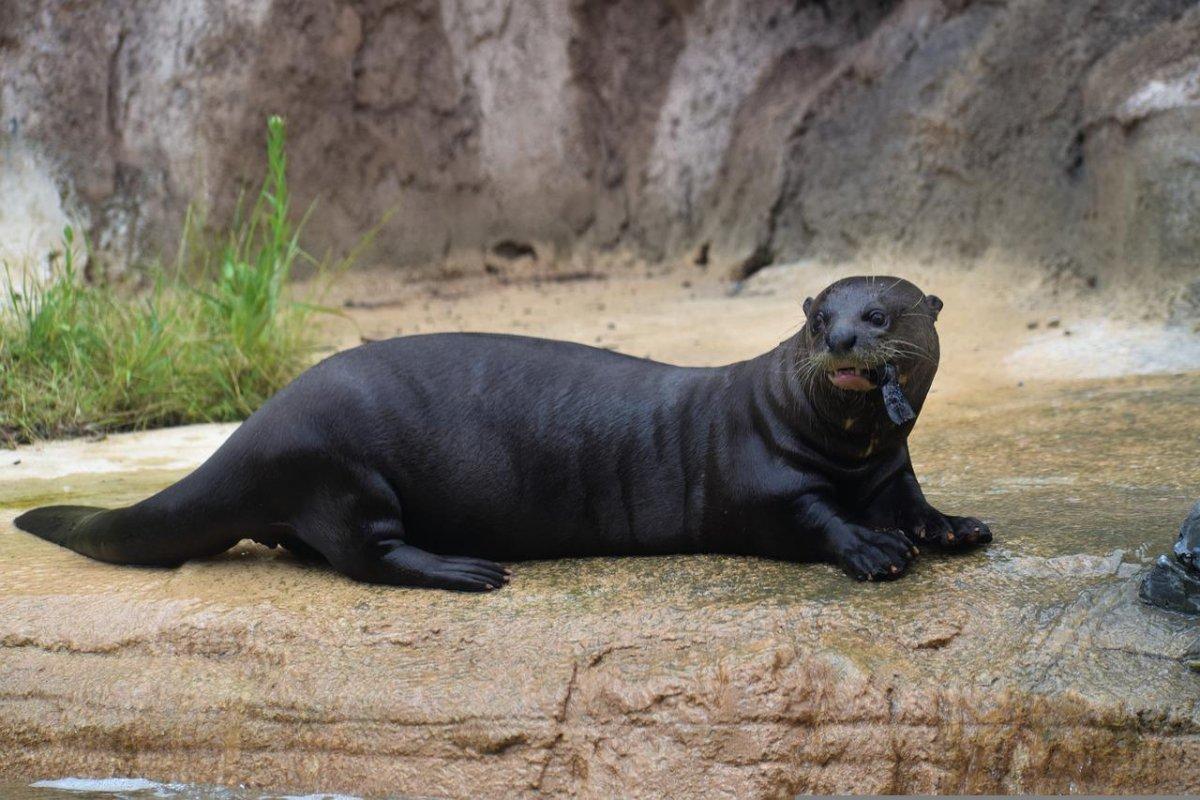
- Name: Giant otter
- Scientific name: Pteronura brasiliensis
- Conservation status:
The giant otter is the longest member of the weasel family. It is a muscular and diurnal carnivorous mammal that feeds on fish and catfish. It is an apex predator.
Funnily enough, the giant otter is the noisiest otter species, and it has different vocalizations depending on what it wants to communicate: reassurance, alarm, or aggression. Sadly, after decades of poaching, its global population has been steadily decreasing, and it is now endangered, with less than 5,000 wild individuals.
9. Andean flamingo
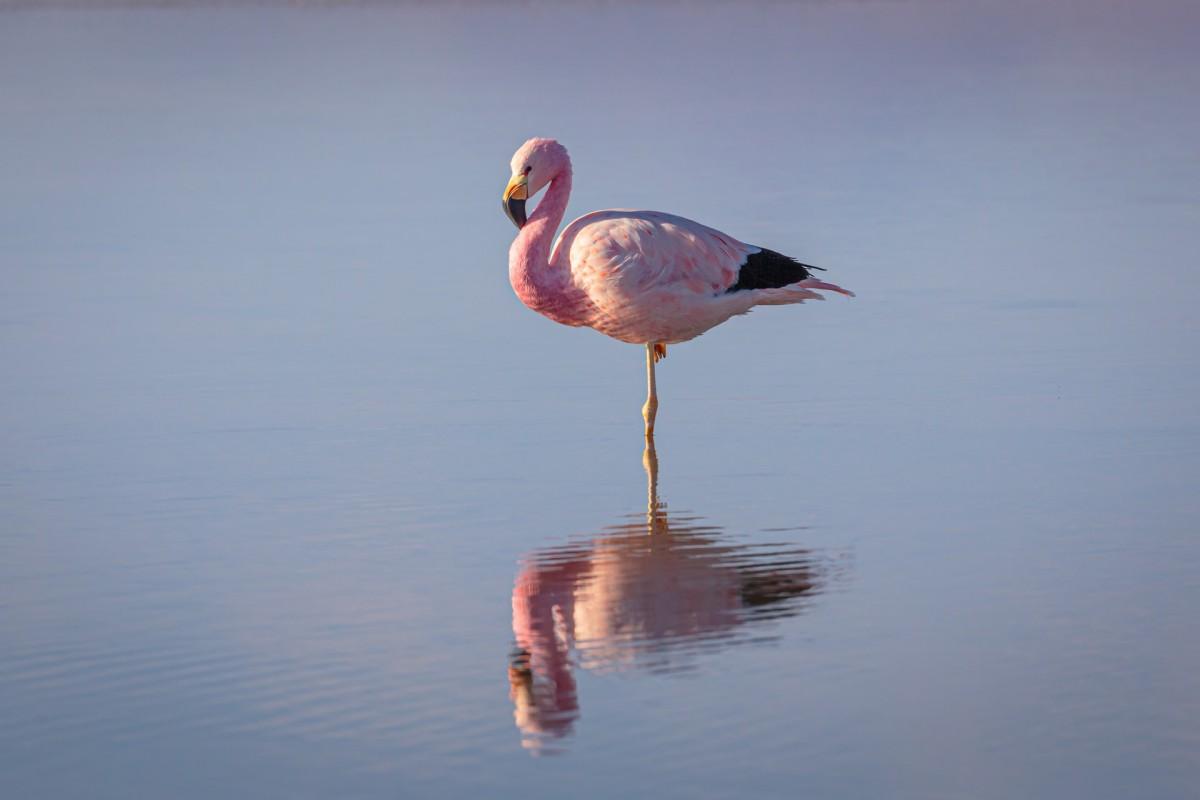
- Name: Andean flamingo
- Scientific name: Phoenicoparrus andinus
- Conservation status:
The Andean flamingo is, as its name says, a species of flamingo native to the Andes mountain range in South America. Just like some whales, it is a filter feeder, and it feeds on available food, from fish to plants and algae.
It is majorly threatened by habitat loss, mostly due to mining excavations. Because of them, Andean flamingos are exposed to borax, which is inoffensive to humans, but highly hazardous for them.
10. Spectacled bear
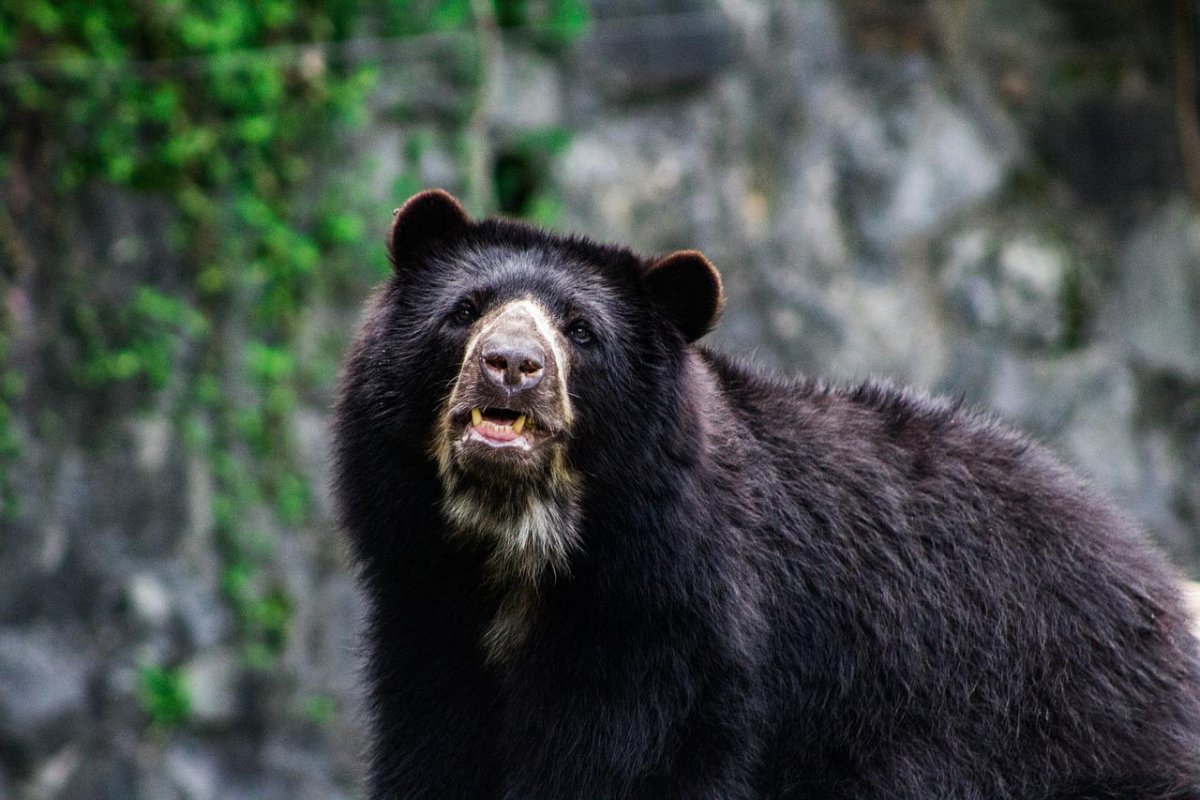
- Name: Spectacled bear
- Scientific name: Tremarctos ornatus
- Conservation status:
The spectacled bear, also known as the Andean bear or the mountain bear, is the last living species of short-faced bear. It is also the last surviving species of bear native to South America, and it is threatened by poaching and habitat loss.
Depending on where people live, they consider the spectacled bear differently. If they live right next to its habitat, they see it as a pest and a cattle predator that needs to be eliminated. On the other hand, if they live further away, they will see it as a friendly, herbivorous, and charismatic animal.
11. Capybara
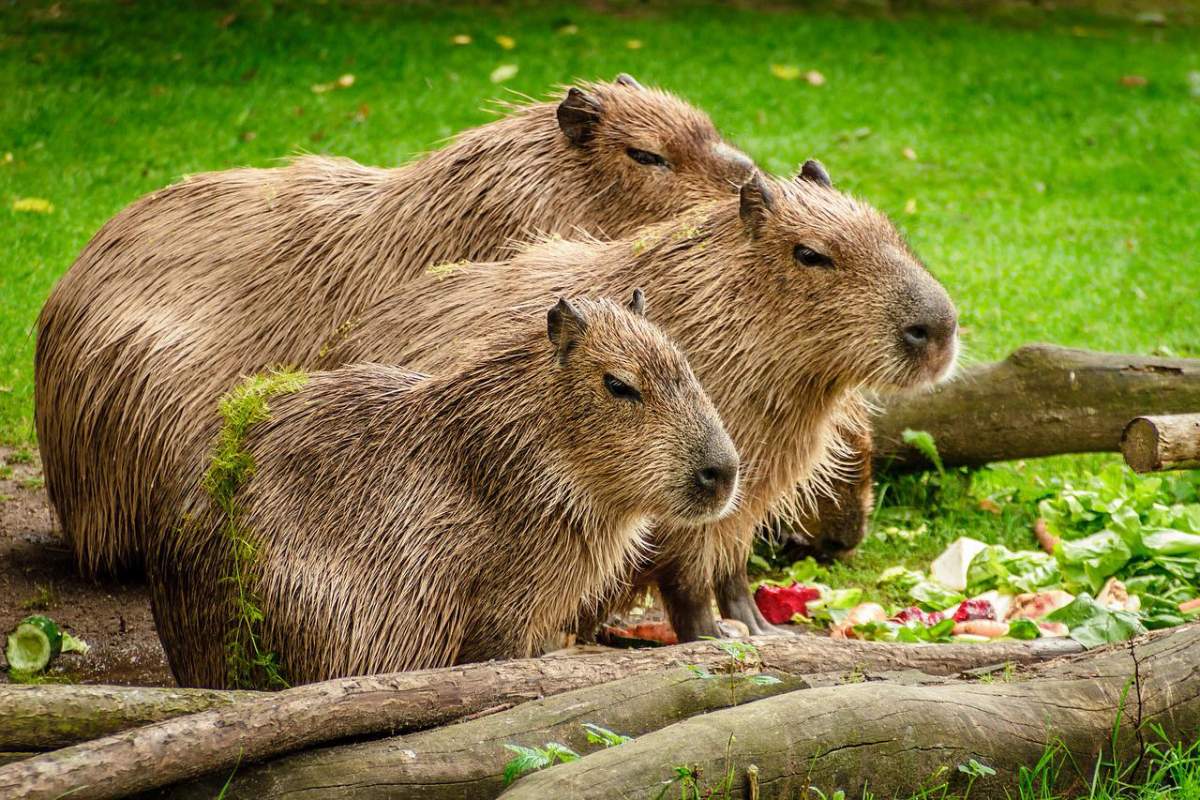
- Name: Capybara
- Scientific name: Hydrochoerus hydrochaeris
- Conservation status:
The capybara is the largest living rodent on the planet, and it is native to several countries of South America. It is closely related to guinea pigs, and it inhabits dense forests and savannas, near bodies of water.
Capybaras live in groups of 10 to 20 individuals, but sometimes with up to 100 animals. Even though it is hunted for its meat and hide, it is currently of least concern due to its wide distribution and stable population.
The capybara is a semiaquatic mammal and an amazing swimmer: it can hold its breath for up to 5 minutes! Their natural predators are jaguars, eagles, caimans, ocelots, and cougars.
12. South American cougar
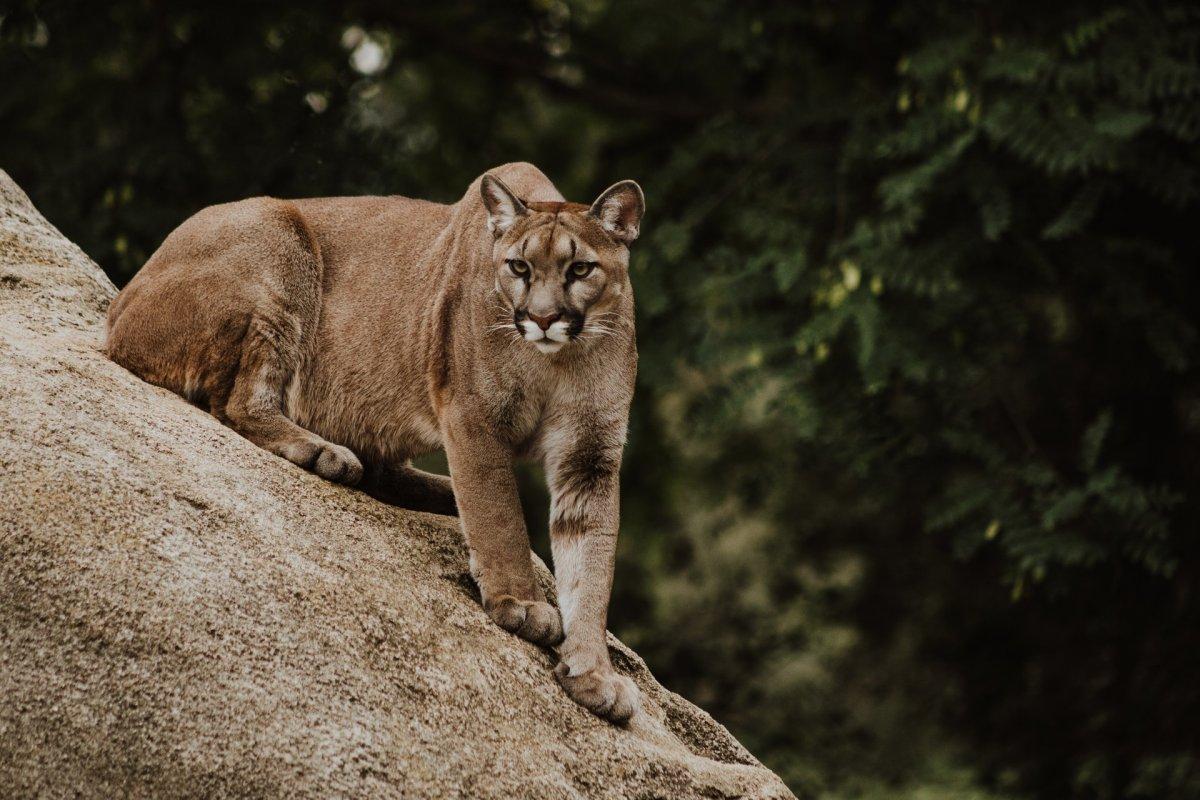
- Name: South American cougar
- Scientific name: Puma concolor concolor
- Conservation status:
The South American cougar is one of the scariest animals you could encounter while taking a hike in the heights of Bolivia. The jaguar is the most widespread large wild terrestrial mammal in the entire Western Hemisphere, and it inhabits mountainous deserts and all forest types, while the South American jaguar, a subspecies, is found in the southern part of the continent.
When it comes to hunting, it is an ambush predator that can even kill medium-sized predators like lynxes, coyotes, and bobcats.
13. Andean condor
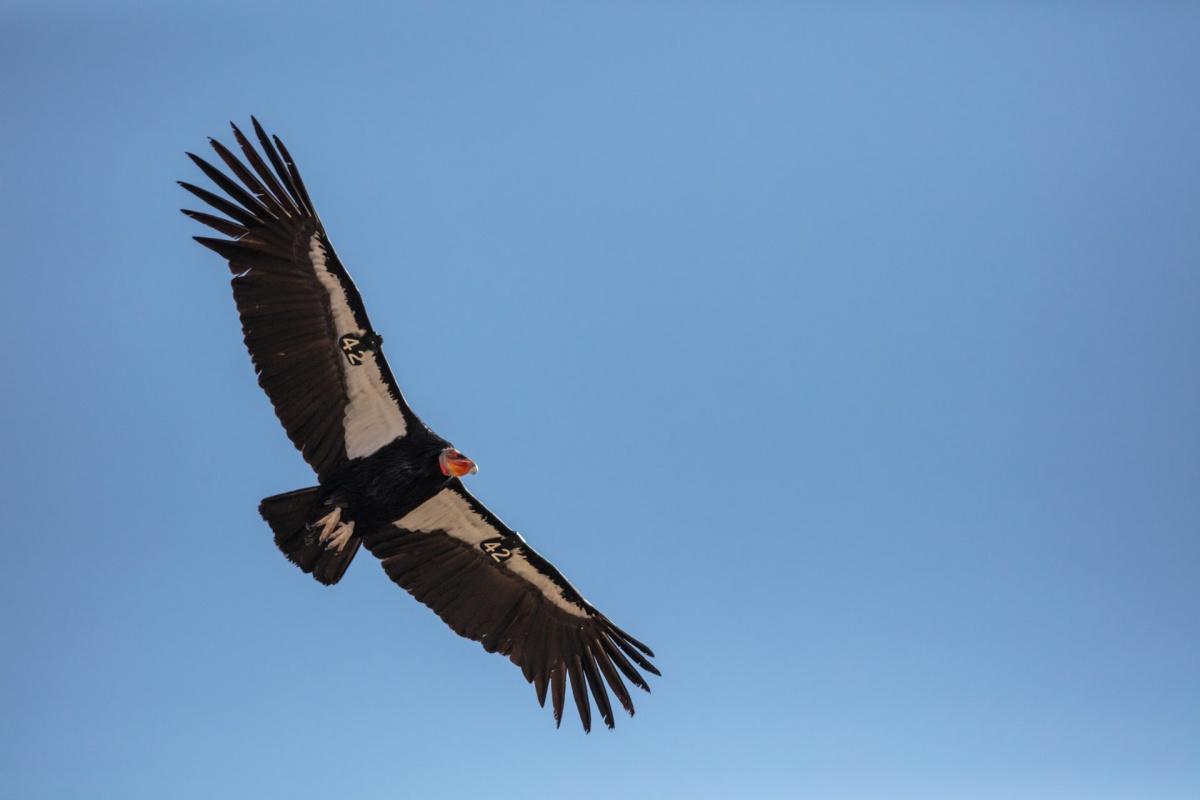
- Name: Andean condor
- Scientific name: Vultur gryphus
- Conservation status:
The Andean condor is one of the most iconic birds in the world. It is the largest flying bird on the planet, with a wingspan of up to 3.3 m / 10 ft 10 in, as well as the largest bird of prey in the world. On top of all this, it is one of the world’s longest-living birds, as it can reach a lifespan of more than 70 years!
Condors are species of vulture, and just like other vultures, it is a scavenger that feeds on carrion. Most of the time, it will eat deer or cattle carcasses.
14. Amazon river dolphin
- Name: Amazon river dolphin
- Scientific name: Inia geoffrensis
- Conservation status:
The Amazon river dolphin, also known as the pink river dolphin, the buteo, or the boto, is the largest species of river dolphin. Males are much longer and heavier than females, and these dolphins become pink as adults due to abrasion of their skin surface. Males are pinkier than females due to more intraspecies aggression.
The pink river dolphin is sadly endangered due to pollution and commercial fishing. When caught in a fishing net, it will either exhaust itself to death or be killed by fishermen, and its body is often used to attract scavenger fishes.
15. Southern viscacha
- Name: Southern viscacha
- Scientific name: Lagidium viscacia
- Conservation status:
The southern viscacha is one of the species of viscacha, which are rodents similar to chinchillas. Outside of its long and bushy tail, it really looks like a rabbit though, with its hind legs and long ears.
It inhabits several countries in South America, including Bolivia, Argentina, and Peru. Its population is stable, but it suffers a lot from weather conditions. It is also hunted for its flesh and fur.
16. Red-bellied piranha
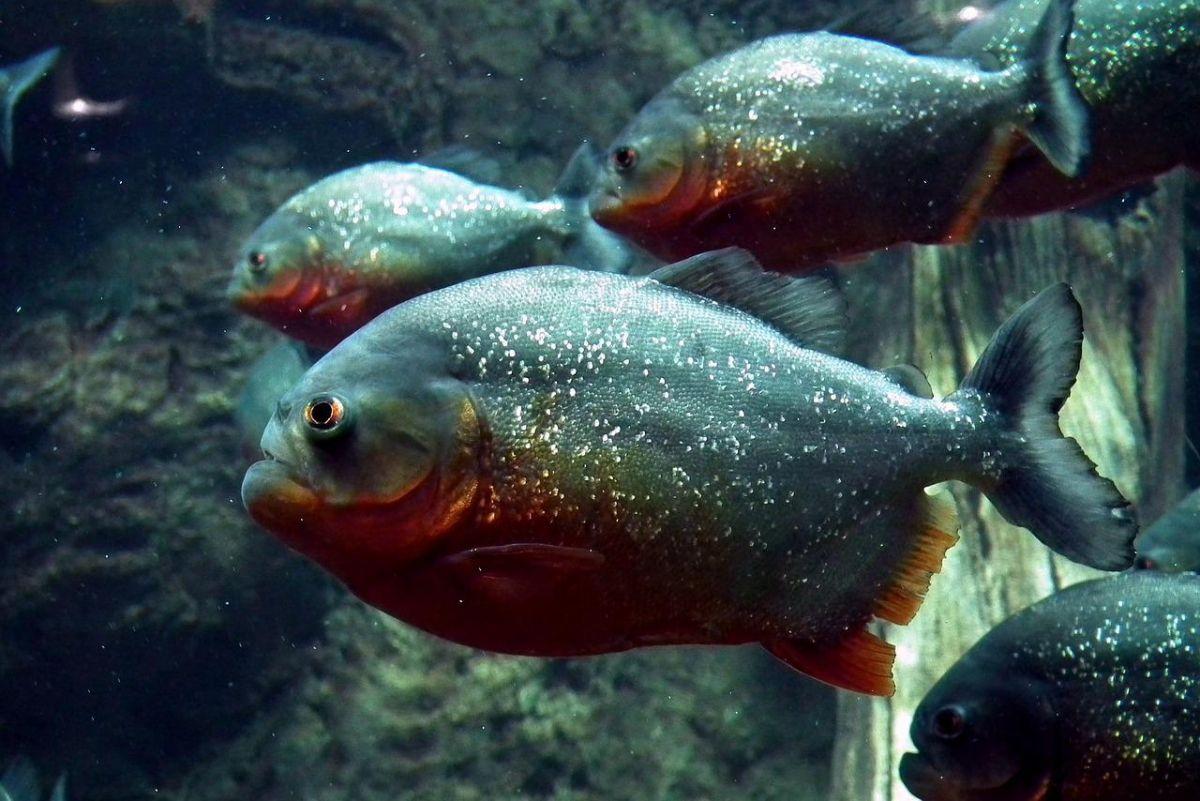
- Name: Red-bellied piranha
- Scientific name: Pygocentrus nattereri
- Conservation status:
The red-bellied piranha is a subspecies of the famous carnivorous fish. It is native to South America, and like other piranhas, it has an extremely strong jaw with sharp teeth. Despite being this dangerous, piranhas are preyed on by cormorants, dolphins, and caimans.
These piranhas usually hunt in little groups, and they are ferocious. Humans use their teeth as tools, and sometimes fish for them and grill them. Even though they are renowned to be extremely dangerous in movies and other media cultures, piranhas are not a serious risk to humans.
17. Andean hairy armadillo
- Name: Andean hairy armadillo
- Scientific name: Chaetophractus nationi
- Conservation status:
Armadillos are intriguing and fantastic creatures. Overall, they are severely threatened, but it is fortunately not the case for the Andean armadillo. It gets its name from its long hair that covers its ventral side and its legs.
Like other armadillos, it has a very strong carapace it can use to protect itself from predators. When it rolls up into a ball, it can barely be hurt. Its main threat is human hunting though, as it was thought to carry leprosy.
18. Southern tamandua
- Name: Southern tamandua
- Scientific name: Tamandua tetradactyla
- Conservation status:
The southern tamandua, also known as the collared anteater or the lesser anteater, is a species of anteater native to South America and to the island of Trinidad in the Caribbean. It is solitary and does not only feed on ants but also on bees, termites, and other insects.
This tamandua inhabits dry and wet forests, from savanna to tropical rainforest. Usually, it lives near rivers and streams and has powerful forearms it uses in self-defense.
19. Gray woolly monkey
- Name: Gray woolly monkey
- Scientific name: Lagothrix lagothricha cana
- Conservation status:
Geoffroy’s woolly monkey, or gray woolly monkey, is a species of woolly monkey native to Brazil, Peru, and Bolivia. It gets its name from its thick gray coat and is listed as endangered due to hunting and deforestation. Its population has been decreasing by around 50 percent in the past 45 years.
The gray woolly monkey lives in cloud forests, from 1,000 to 2,500 m (3,280 to 8,202 ft) high.
20. Molina’s hog-nosed skunk
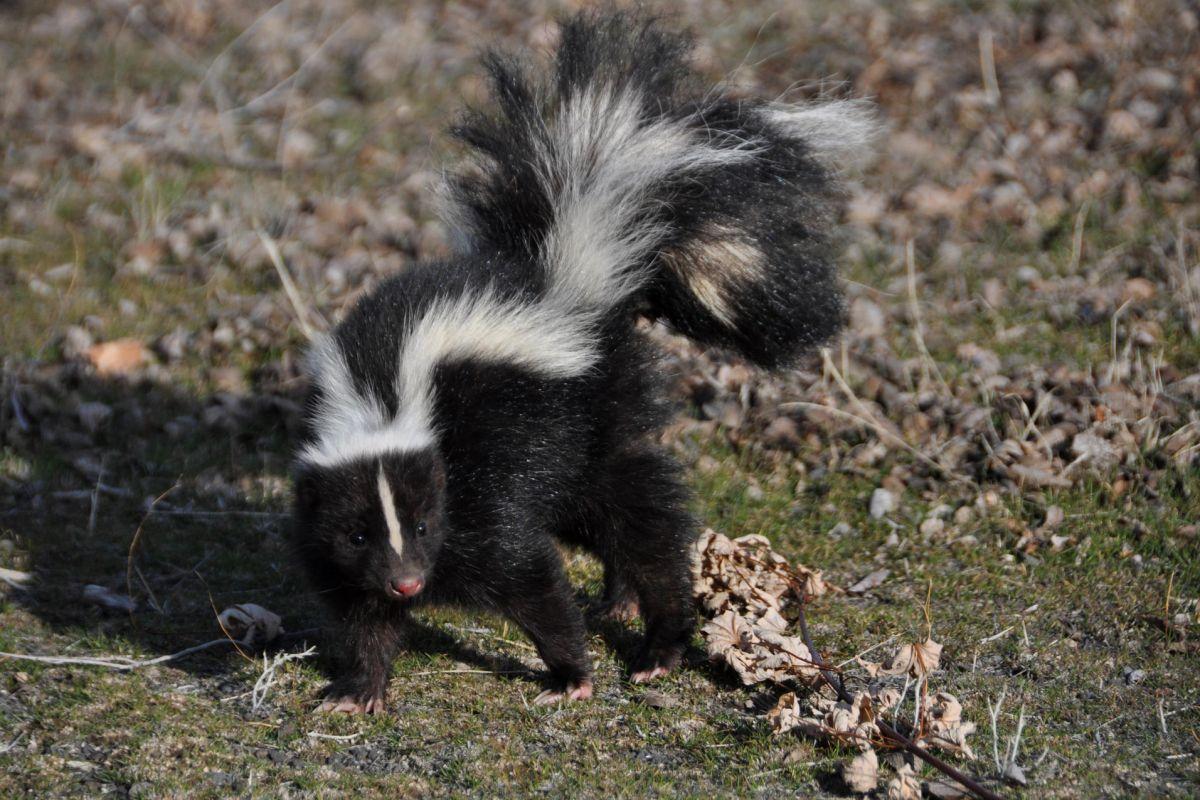
- Name: Molina’s hog-nosed skunk
- Scientific name: Conepatus chinga
- Conservation status:
Molina’s hog-nosed skunk is named after Juan Ignacio Molina, a Spanish Jesuit priest, and naturalist who described the animal in 1782. It is an animal that can be found in Bolivia, Brazil, Peru, Uruguay, Argentina, and Chile, at up to 5,000 m / 16,404 ft.
These skunks live solitary lives and only join for mating purposes. They are omnivorous and eat anything from small mammals and birds to eggs, leaves, and insects.
21. Humboldt’s white-fronted capuchin
- Name: Humboldt’s white-fronted capuchin
- Scientific name: Cebus albifrons
- Conservation status:
Humboldt’s white-fronted capuchin is a tiny species of capuchin monkey. It usually inhabits the primary forest, which is an ancient forest that did not suffer from any disturbance but can also be seen in secondary forest, a forest that has regrown after a timber harvest.
The diet of the Humboldt’s white-fronted capuchin is very varied, and it eats anything it can, like fruits, insects, flowers, honey, nuts, and tree frogs.
—
So there you have them, these were my 21 Bolivia native animals. I hope you enjoyed this list and that you learned something new today.
In case you want to learn more about animals in the country, feel free to keep reading, as I still have lots of things to tell you about:
Endangered Animals of Bolivia
This is definitely the saddest part of the list, but it is very important to raise awareness. Because of this, let’s go through the list of endangered animals in Bolivia.
Here are the animals in danger of extinction in Bolivia.
- None
- Olalla brothers’ titi
- Carabaya stubfoot toad
- Red-fronted macaw
- Royal cinclodes
- Bolivian stubfoot toad
- and 32 more…
- Andean cat
- Chaco side-necked turtle
- Wattled curassow
- Crowned solitary eagle
- Chacoan peccary
- and 30 more…
To see the full list of endangered species in Bolivia, head over to the International Union for Conservation of Nature’s Red List.
What is the National Animal of Bolivia?
The national animal of Bolivia is the llama.
Bolivia is famous in the whole world for its llamas, and it is not very surprising that this animal is the national symbol. In fact, it has always been an important part of the culture in all of South America and even gained fame in Western culture in recent times.
In fact, llamas were also important during the Inca Empire. They were the only beasts of burden, and llama figures were buried with the dead, as it had a symbolic significance.
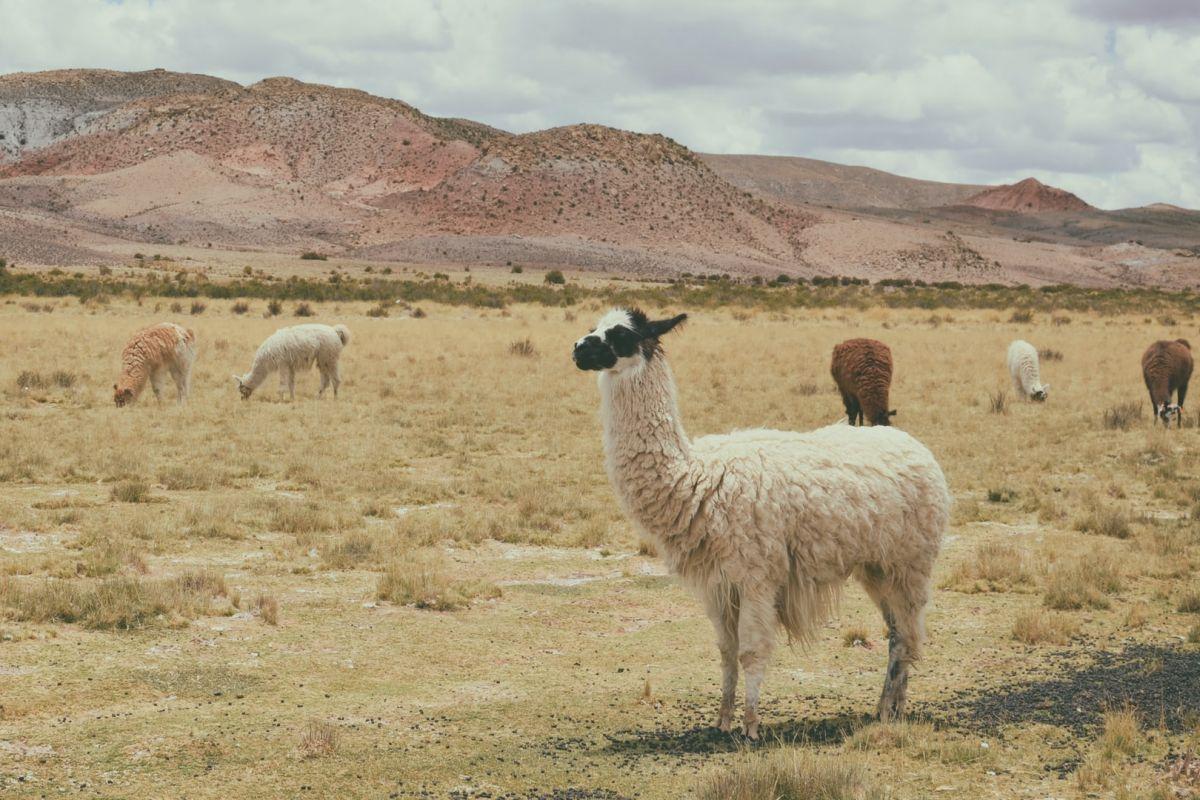
How Many Animals Native to Bolivia?
What is the diversity of native animals in Bolivia?
Let’s look at the total number of species of Chordata (mammals, birds, fishes, and reptiles).
Total number of animal species in Bolivia: 2,555 (14,027 in total in South America)
More About Animals in the World!
Loved these Bolivia wildlife facts? Want to see what animals live in other countries?
Then check out these posts:
Or click here to see ALL the facts up on the blog! Spoiler alert: there’s A LOT of them.
Share the knowledge! Click on the buttons below to share information about these popular animals in Bolivia with your friends, and help them learn more about the world 🙂
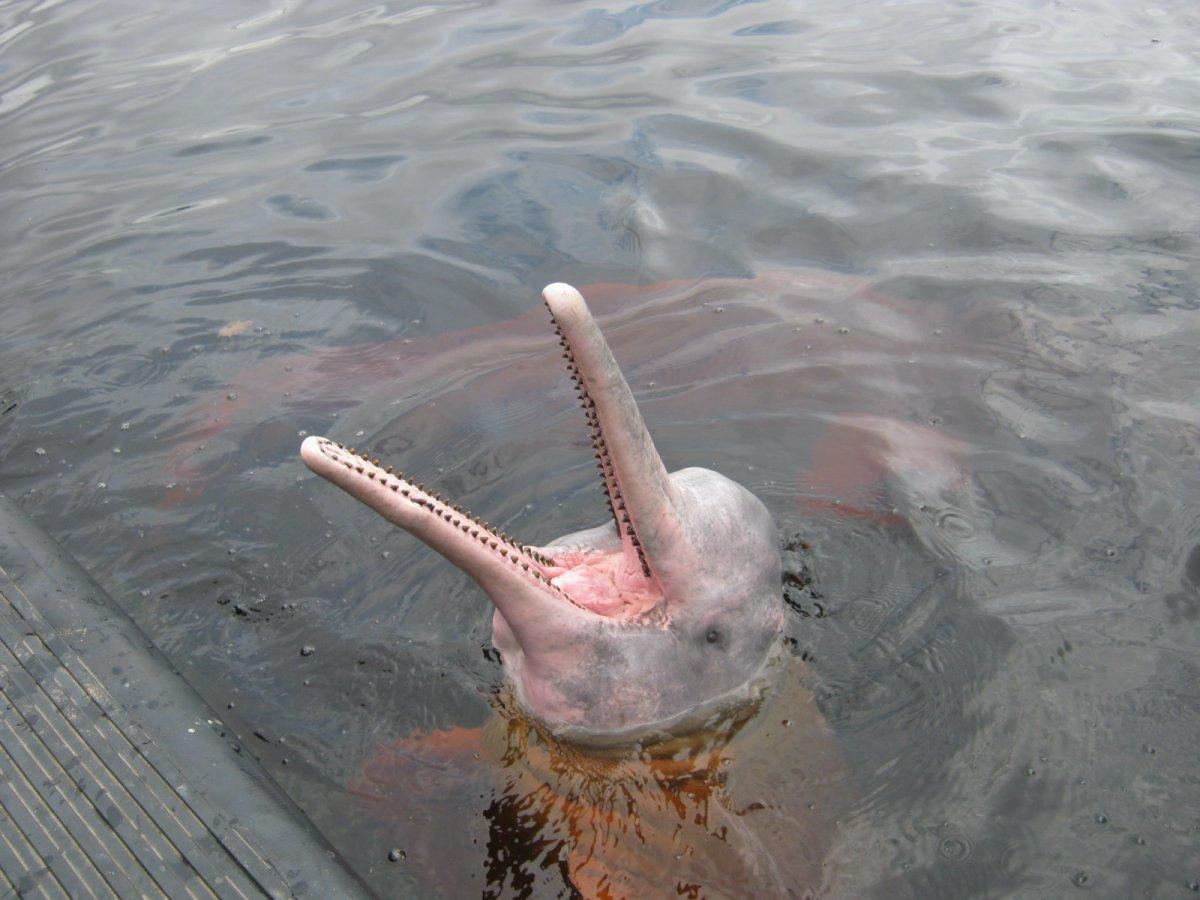
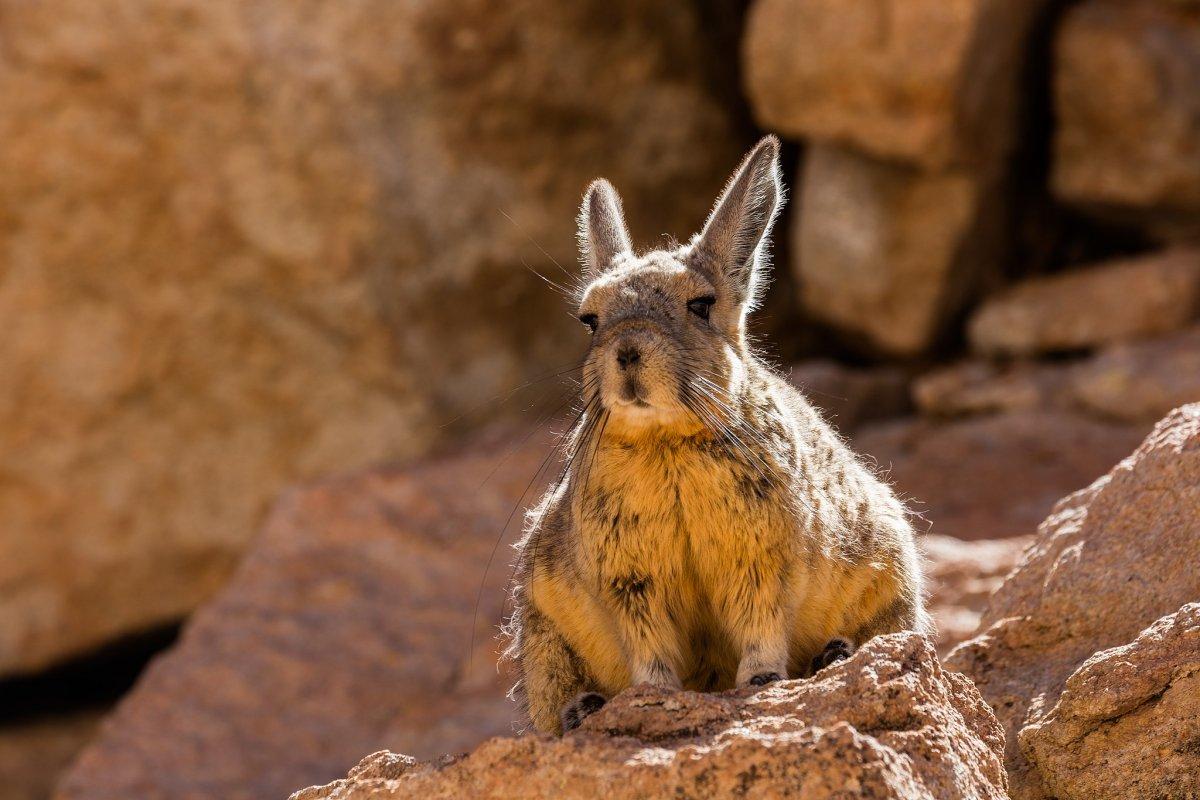
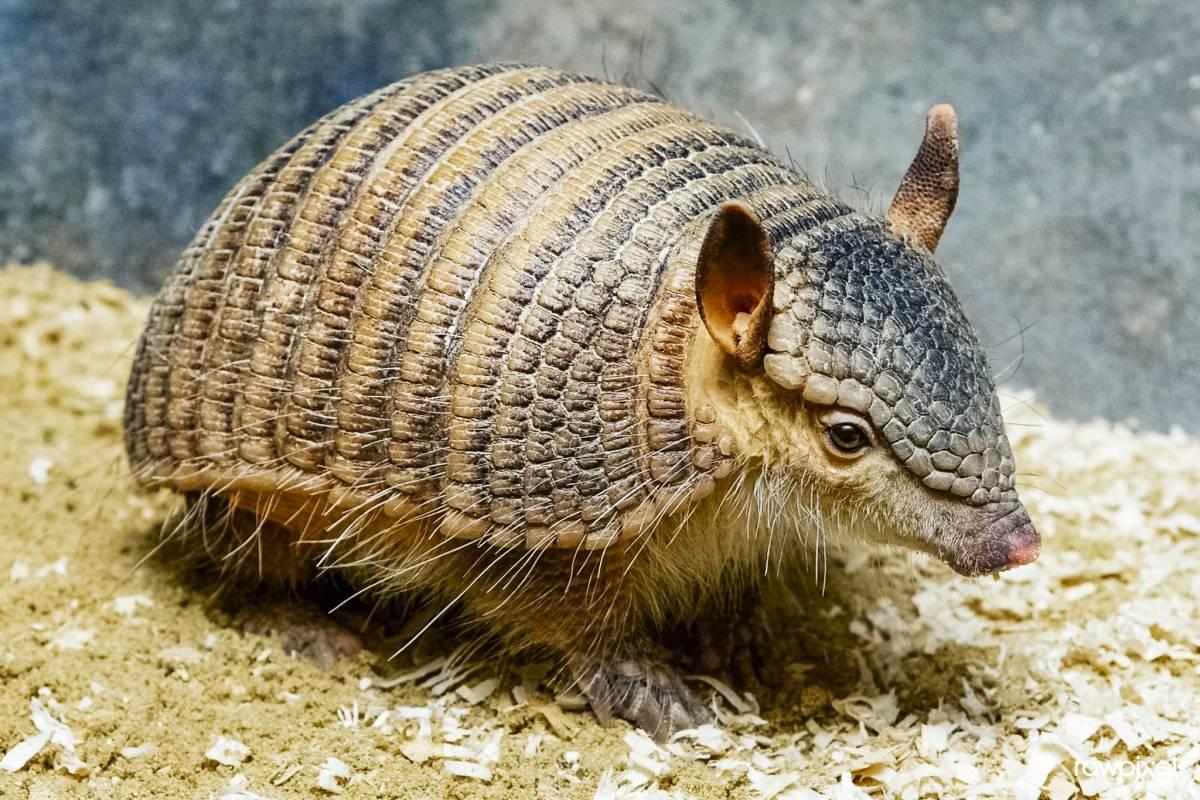
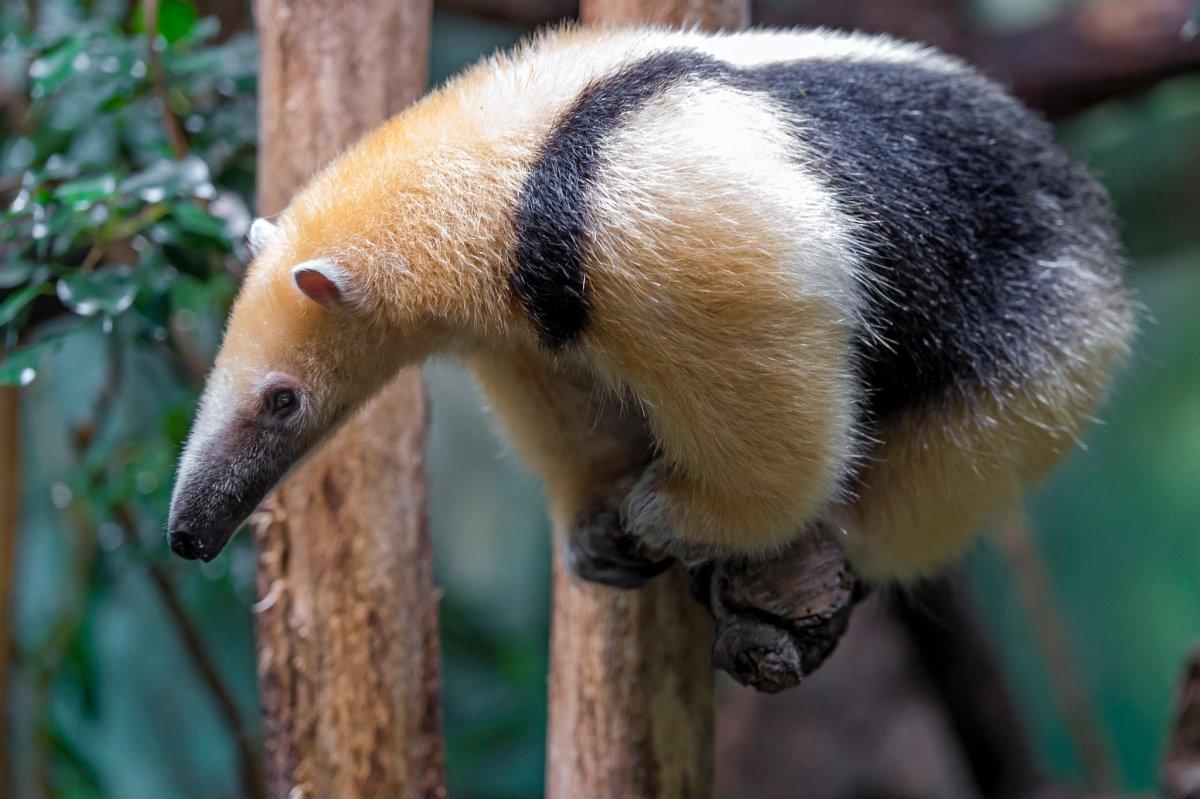
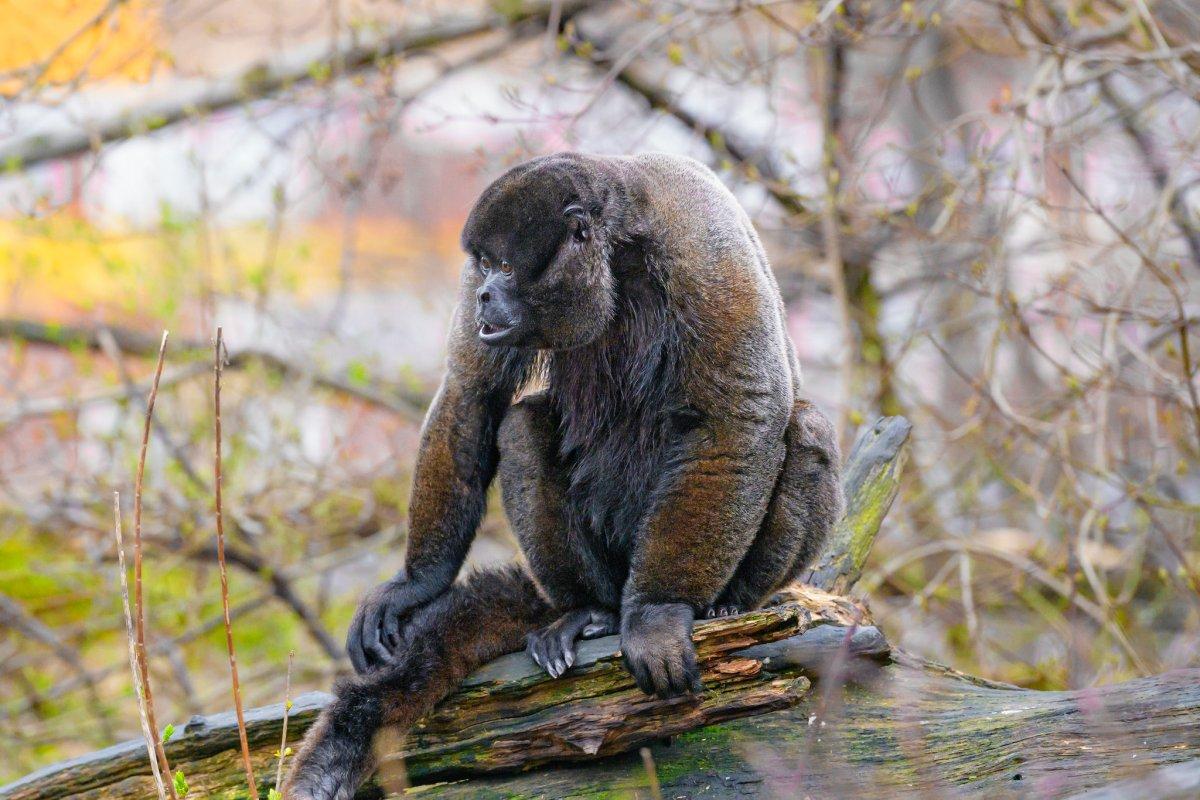
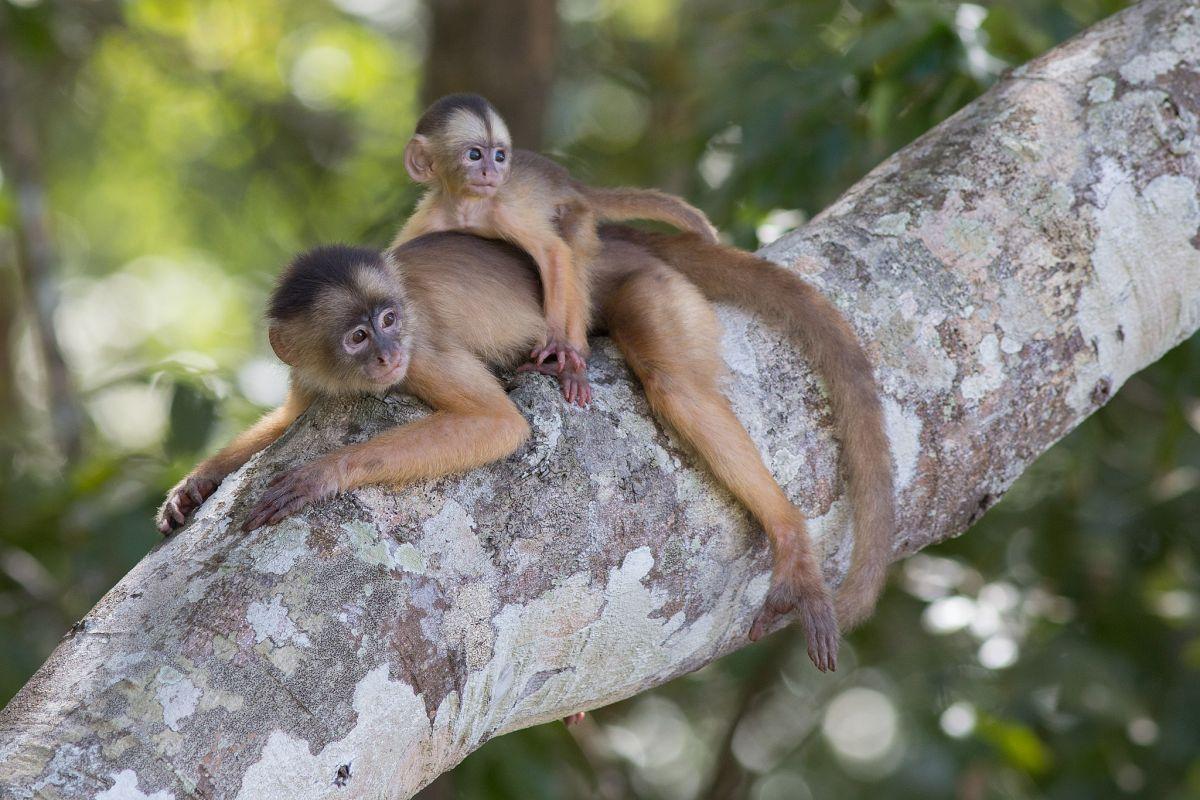

![27 Wild Animals in France [Wildlife in France]](https://www.kevmrc.com/wp-content/uploads/2022/06/27-wild-animals-in-france.jpg)
![10 Wild Animals in Kuwait [Wildlife in Kuwait]](https://www.kevmrc.com/wp-content/uploads/2022/06/10-wild-animals-in-kuwait.jpg)
![17 Wild Animals in Venezuela [Wildlife in Venezuela]](https://www.kevmrc.com/wp-content/uploads/2022/08/17-wild-animals-in-venezuela.jpg)